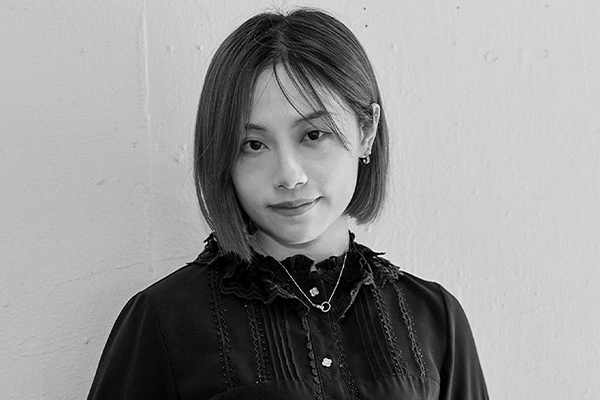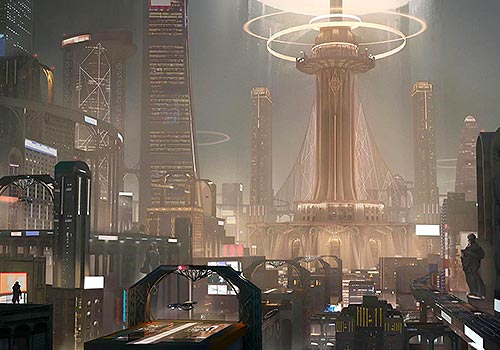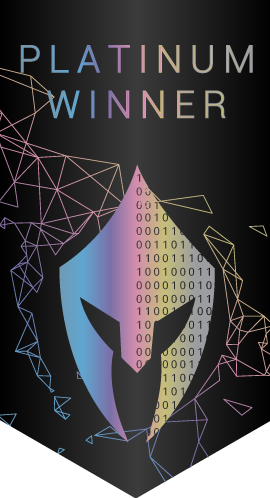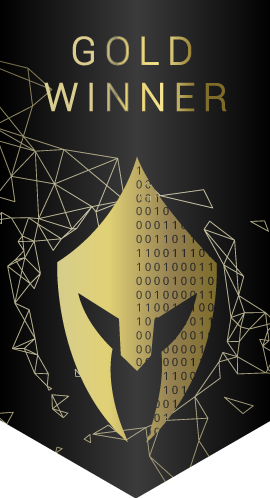
Interview
Yuwei (Rita) Li
United States
Yuwei (Rita) Li, a concept artist in the video game industry, transforms ideas into captivating visual designs. Her work combines inspiration from nature, diverse cultures, mythology, and architecture, aiming to tell stories, create experiences, and inspire others through her art.
1 Please give us a brief bio of yourself and your background.
Hi! My name is Yuwei (Rita) Li, and I am a concept artist and illustrator based in LA, USA. I graduated from ArtCenter College of Design with a major in Entertainment Design. Currently, I work as a concept artist in the video game industry, where I create visual designs that bring ideas to life. I draw inspiration from nature, diverse cultures, mythologies, and architecture, and I blend these influences with my imagination into my concept art. Through my art, I want to share stories, create experiences, and inspire others.
2 What made you become/why did you choose to become a digital designer/artist?
I have always had a passion for art since childhood. Games, movies, and animation were some of my early influences. As I grew up, I also developed an interest in nature and cultures worldwide. I started to incorporate these influences into my art, bringing my imagination to life on paper. Later, I realized that through art, especially concept art and illustration, I can communicate ideas, and inspire others. By designing digitally, I found that it gave me so much freedom to try different styles and techniques. It became very natural for me to combine my interest in art and design with digital media to create better designs.
3 Tell us more about your business/company, job profile, and what you do.
I’m a concept artist and illustrator! In games and movies, most of the environments, mood, light and color, characters, costumes, vehicles, and almost everything are designed by concept artists. And that’s what I do! At work, I create mood boards, sketches, designs, and illustrations of the concept, and the other artists can use my work as guides and make the final models in the game. Most of the time, I use a combination of 3D and 2D software to achieve the best result.
4 What’s your favorite kind of digital design and why?
I love the design that focuses on storytelling. Storytelling includes not only the background story, but also every detail that contributes to the story: the design itself, the mood, the light and color, the composition. Without a story behind the design, the design itself would only be a pretty picture, but not something that engages the viewer.
5 To you, what makes a “good” design?
As a concept artist, I would say clarity and storytelling make a “good” design. The clarity is whether the concept I designed is easy to understand by the viewers. And storytelling is a way that makes the viewer relate to the design, it’s a connection. Beyond these two, “originality” also makes a design “good”, even though I don’t think there are true “original” designs. The originality comes from combining the familiar designs with the unfamiliar ones. It pushes the boundaries of design.
6 Describe your design style and its main characteristics.
My style is a combination of realistic and stylized. I apply stylized characteristics to my design, such as exaggerated shapes, colors, and textures, and I use realistic rendering techniques, which are achieved by both 3D and 2D art processes. I like to always add something new to my design, rather than doing purely realistic settings. I especially enjoy creating fantasy and sci-fi concept art, which is inspired by real-world nature and cultures.
7 Tell us about your design process.
First, I do research on the things I’m designing and create a reference board of the subject, the mood, and the targeted style. Then I create sketches based on the reference board, and explore different ideas and compositions. I try to find the best way to convey the concept and the story. Sometimes, I create 3D models and use them as the base for my design. Finally, I use the 3D modeling as a base and paint over them to refine the details and polish the final rendering.
8 Where do you draw inspiration from?
I draw inspiration from various sources, both art-related and non-art-related. I find inspiration from nature, history, mythologies, and innovative technology, expanding my horizons beyond conventional art topics. Everything around me serves as a catalyst for my art. For example, in my concept art, I explore themes like the futuristic city inspired by art nouveau and innovative architecture, the grand palaces of Mesopotamia, the mythologies of Hawaiian culture, and more. By adding real-world elements, I make my design more grounded and relatable to the viewers.
9 What current trends in digital design (or really anything digital related) are you most excited about?
I’m most excited about the diverse art direction! With the emergence of AI, I value more the human touch and vision. Currently, in the game and animation industry, there are more and more projects that step out of their comfort zone and develop their unique art styles! I hope to see more diversity and creativity in the industry.
10 Congratulations! As the winner of the 2023 Vega Awards, what does it mean to you and your company and team to receive this award distinction?
I’m very honored to be a winner of the 2023 Vega Awards. It means a lot to me to receive this award distinction. It also motivates me to create better designs in the future.
11 Can you explain a bit about the winning work you entered into the 2023 Vega Awards, and why you chose to enter this project?
My project Futuristic City won the Platinum Award in the 2023 Vega Award, and my cover art for The Murders in the Rue Morgue won the Gold Award. Futuristic City is my personal passion project, where I combine classic architecture styles with sci-fi designs. It is a great example of how I blend the motifs I am interested in and add my spin to them, to create unique designs. The cover art I created for The Murders in the Rue Morgue captures the mystery and horror of the story, using a monochromatic color palette and dramatic composition. I chose to enter these projects because they showcase my skills and style as a concept artist and illustrator.
12 What was the biggest challenge with this project?
The biggest challenge with this project was how to combine the two styles smoothly together and make them believable. I had to do a lot of research on the historical and cultural aspects of these styles, and find a way to balance them with the futuristic and technological aspects. I also had to consider the mood and atmosphere I wanted to create. It was a complex and creative process, but I enjoyed it very much.
13 How has winning an Award developed your practice/career?
Winning the Vega Award has provided me with valuable recognition and exposure within the design industry.
14 What are your top three (3) favorite things about the digital industry?
Creativity, Diversity, and Innovation.
15 Where do you see the evolution of digital industry going over the next 5-10 years?
I think that AI will be a big challenge and also a big opportunity for the digital industry. I am happy to see that with the help of AI, more creators can use it to enhance their projects. It also makes me realize how important it is to keep updated and always learn new things. With proper and regulated use of AI, it can help us to explore new possibilities and styles in digital design.
16 If you were a student entering this industry or an aspiring Vega Award submitter, what advice would you give them?
Don’t be afraid of trying a new design idea. A good project always comes from a passion project, something that you enjoy doing and want to share with others. Always do personal projects: they are the best way to learn new skills, find new inspirations, and express your creativity.
17 What resources would you recommend to someone who wants to improve their skills in the digital industry?
I would recommend them to go to nature and observe the beauty and diversity of life. Nature can be a great source of inspiration for digital design, as it offers many patterns, shapes, colors, and textures that can be applied to different projects. In terms of the technical skills, I would recommend them to explore the online resources and tutorials.
18 Who has inspired you in your life and why?
One of my favorite manga artist groups CLAMP has inspired me a lot since childhood. Their stories, their way of telling a story, and their graphic art styles have influenced me even today.
19 What is your key to success? Any parting words of wisdom?
My key to success is to be open-minded, not afraid of challenges, and keep learning. I try not to say NO to new ideas, or new technologies before I try it or do research into it.



